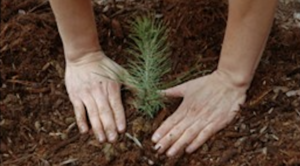REGROW TO RESTORE

The Black Forest Community REGROW TO RESTORE project needs community support.
If you are able, please dig and pot a small sapling from your property and bring it to the
Black Forest Fire Remembrance Event on June 10th, 2023.
We have a list of residents whose properties were destroyed by the fire. The hope for this community project is community sharing of people who have trees to donate to those who need trees.
Volunteers Needed
The originator of this project, Terry Stokka, has been collecting the names of both donors and recipients.
We need more help! We are looking for volunteers who can help to coordinate the transplants. If you are interested, please email WeAreBlackForestCO@gmail.com. Thank you!
Transplant Tips
The best time to move most trees is in the spring. When you move trees in the spring, they have a full season to familiarize themselves with their new climate.
If you move trees during the fall, they do not have enough time to adjust before winter arrives. This is especially true with evergreens. Also, avoid moving trees during the summer because heat puts unnecessary stress on trees.
Choosing a Sapling
Find a tree sapling that is just a couple of inches tall.
You will want to move it before the roots start growing too much. If you wait too long, you risk disturbing its roots which can be detrimental to the health of the sapling.
Moving the Sapling
The roots of the sapling should not be longer than the stem itself, but in any case, you want to dig deeply enough below and widely enough around the stem that you’re taking up a sizeable pocket of soil, with the sapling remaining in-position and intact (a few inches below, a few inches around). You should do everything you can to keep the root ball together.
Keep soil around the root ball at all times. The roots that absorb moisture and nutrients from the soil are tiny- about the diameter of a human hair. If these roots dry out during digging or transport, the tree will not regenerate them. It will die!
Protect the tree from wind during transport. This will reduce the amount of water lost from the sapling.
Planting the Sapling
Dig a small hole for the sapling. Place the plant deep enough in the soil to cover the top of the root ball with one-quarter of an inch of soil. If the top of the root ball is exposed, the plant will dry very quickly and could die. Move soil around the plant and firm the soil, but do not pack it down.
Water with a gentle spray to wet the entire area without puddling or eroding the soil around the transplants. Keep plants watered to develop healthy, large, leafy plants that have deep roots and can withstand the heat of summer.
Sources:
https://blog.davey.com/tree-transplanting-cutting-tree-roots-without-killing-a-tree/
https://www.nashvilletreeconservationcorps.org/treenews/transplanting-volunteer-growth-saplings/
https://planttalk.colostate.edu/topics/vegetables/1818-transplanting-garden/